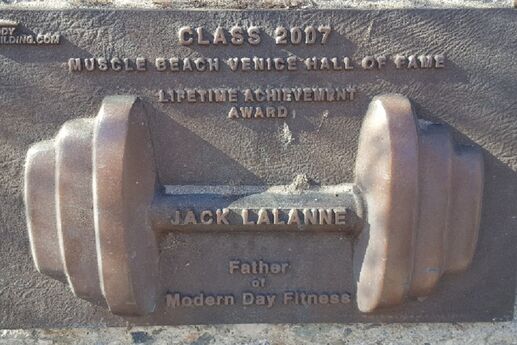6 Ways to Fight the Flu for Real
You don’t have to let the cold and flu season have its way with you. Boost your immune system now.
This year’s cold and flu season will feel like one of the latest Batman or Spider-Man flicks: You won’t just be battling one villain; you’ll have to fight off several. Experts predict two flu epidemics: the regular seasonal flu and the possibly pandemic-causing swine flu (along with the usual plethora of rhinoviruses, of course). Colds and flu bugs spread from person to person, so unless you’re a cave-dwelling hermit, you’re at risk.
What to do? Boost your immune system now to dodge these viral bullets.
1. Get Shot
To keep performing at your best, you’ll need to roll up your sleeve. According to the Centers for Disease Control and Prevention (CDC), the most powerful tool for preventing flu -- both seasonal and swine -- is the annual flu shot, available in October and November from doctors, public health departments and some pharmacies (Walgreens, for example). Flu shots rev up the immune system to prevent flu infection. This year you’ll need one shot to prevent seasonal flu and another to prevent swine flu. (The swine flu vaccine is currently in the final stages of testing.)
2. Become a Friend of Herbs
Another way to enhance immune function is to take immune-boosting herbs. A great deal of research shows that some herbs activate the immune system against colds, flu and other diseases. For example:
- Andrographis Chilean researchers gave either a medically inert placebo or Andrographis (1,200 mg per day) to 158 adults who felt colds coming on. After five days, “Andrographis had a high degree of effectiveness in reducing symptoms.” The herb cut the severity and duration of sore throat and nasal symptoms in half. A Swedish study compared Andrographis and a standard antiviral drug (amantadine, Symmetrel) for treatment of flu. The herb worked almost as well as the more costly drug. Andrographis is available at health food stores and supplement shops. Take 1,200 mg a day or follow package directions.
- Echinacea “Echinacea is my favorite immune booster,” says James Duke, Ph.D., retired director of medicinal herb research for the U.S. Department of Agriculture. But Echinacea is controversial. Some studies show strong immunity rallying against colds. Others show no benefit. Swiss researchers analyzed what they called “the three best studies” and found that Echinacea cuts cold risk in half. It’s available at health food stores and supplement shops. Follow package directions.
- Ginseng Asians revere ginseng as an immune booster and total-body health promoter.
Canadian researchers gave 279 adults, ages 18 to 65, either a placebo or dose of ginseng (200 mg twice a day). Four months later, the ginseng group suffered fewer than half as many colds -- and the ones they did develop were brief and mild. Likewise, University of Connecticut researchers gave flu shots to 43 people over 65 years, plus a placebo or ginseng (200 mg twice a day). The ginseng group was 50 percent less likely to develop flu. Finally, at Eastern Virginia Medical School, researchers gave flu shots to 198 nursing home residents, plus either a placebo or ginseng (200 mg twice a day). After three months, the ginseng group was an astonishing 89 percent less likely to catch flu.
Ginseng is available at health food stores and supplement shops. Take 200 mg twice a day or follow package directions.
3, 4 and 5. Just Plain Live Healthy
And let’s not forget standard health advice, which keeps the immune system in top form:
- Get at least seven hours of sleep a night Sleep deprivation impairs immune function and increases risk of illness. Many men think they can get by on five or six hours of sleep a night -- then they wonder why they feel so run down and catch so many colds.
- Eat less junk food and more fruits and vegetables Most food-health studies focus not on colds and flu but on cancer and other serious diseases. In a classic study, researchers at the University of California, Berkeley analyzed 156 studies of diet and risk of every major cancer. Compared with people who ate the fewest fruits and vegetables, those who ate the most had just half the cancer risk. So really, if these crops have the power to push back cancer, it sure couldn’t hurt to up your intake of them during cold and flu season.
- Get regular exercise A great deal of research shows that moderate physical activity invigorates the immune system. Researchers at Appalachian State University in North Carolina assigned 50 non-exercisers to either continue life on the couch or take brisk walks (45 minutes a day). After 15 weeks, the exercisers reported only half as many days with cold symptoms. Exercise also revs up the immune system against cancer. Harvard researchers monitored the health of 47,000 men for five years. Compared with those who were inactive, the men who exercised two hours a week were 30 percent less likely to develop colon cancer. If they exercised four hours a week, their risk dropped 50 percent.
6. Picture Your Health
Finally, as you get your flu shots, take immune-boosting herbs, get more sleep, eat salads and exercise, visualize your immune system growing stronger and devouring cold and flu viruses. Visualization, also known as guided imagery or self-hypnosis, is a form a meditation, and many studies show that meditation boosts immune function. In a 2003 study, University of Wisconsin researchers gave flu shots to 41 young adults, 25 of whom had been taught visualization-based meditation. The visualization group showed a stronger immune response to the vaccine, meaning greater protection from flu.






